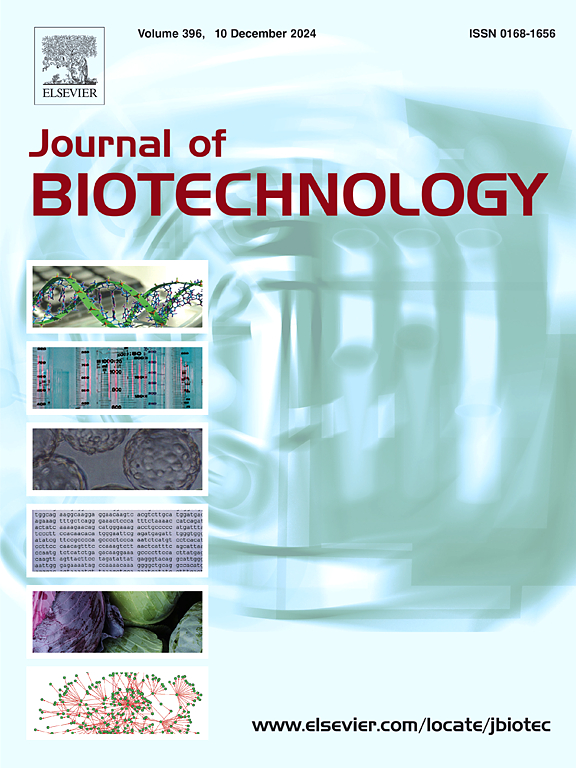An efficient lysate-based approach for biosynthesis of the pyrrolobenzodiazepine natural product tilimycin
IF 4.1
2区 生物学
Q2 BIOTECHNOLOGY & APPLIED MICROBIOLOGY
引用次数: 0
Abstract
Many bacteria use nonribosomal peptide synthetases (NRPSs), a family of multidomain enzymes that produce peptide natural products using an assembly line strategy. One class of such compounds are pyrrolobenzodiazepines, which have DNA alkylating activity. One example is tilimycin, a compound produced by the human gut microbiota that plays a role in epithelial damage during antibiotic-associated dysbiosis. The production of analogs of these natural products may facilitate the discovery of novel bioactive molecules. However, the synthesis of these natural products typically requires significant resources and time to produce in sufficient amounts for microbial and biochemical testing. Biocatalysis offers an environmentally friendly approach, but enzyme yield and stability, particularly with large multidomain enzymes that are often used in natural product pathways, can limit biochemical reactions with purified protein. Here, we demonstrate a cell lysate-based method to synthesize the nonribosomal peptide natural product tilimycin directly from the substrates 3-hydroxyanthranilic acid and L-proline with lysates from E. coli cell lines that express the tilimycin biosynthetic proteins. We present our protocol optimization and scale-up to produce tilimycin in a fast, efficient manner.
求助全文
约1分钟内获得全文
求助全文
来源期刊

Journal of biotechnology
工程技术-生物工程与应用微生物
CiteScore
8.90
自引率
2.40%
发文量
190
审稿时长
45 days
期刊介绍:
The Journal of Biotechnology has an open access mirror journal, the Journal of Biotechnology: X, sharing the same aims and scope, editorial team, submission system and rigorous peer review.
The Journal provides a medium for the rapid publication of both full-length articles and short communications on novel and innovative aspects of biotechnology. The Journal will accept papers ranging from genetic or molecular biological positions to those covering biochemical, chemical or bioprocess engineering aspects as well as computer application of new software concepts, provided that in each case the material is directly relevant to biotechnological systems. Papers presenting information of a multidisciplinary nature that would not be suitable for publication in a journal devoted to a single discipline, are particularly welcome.
 求助内容:
求助内容: 应助结果提醒方式:
应助结果提醒方式:


